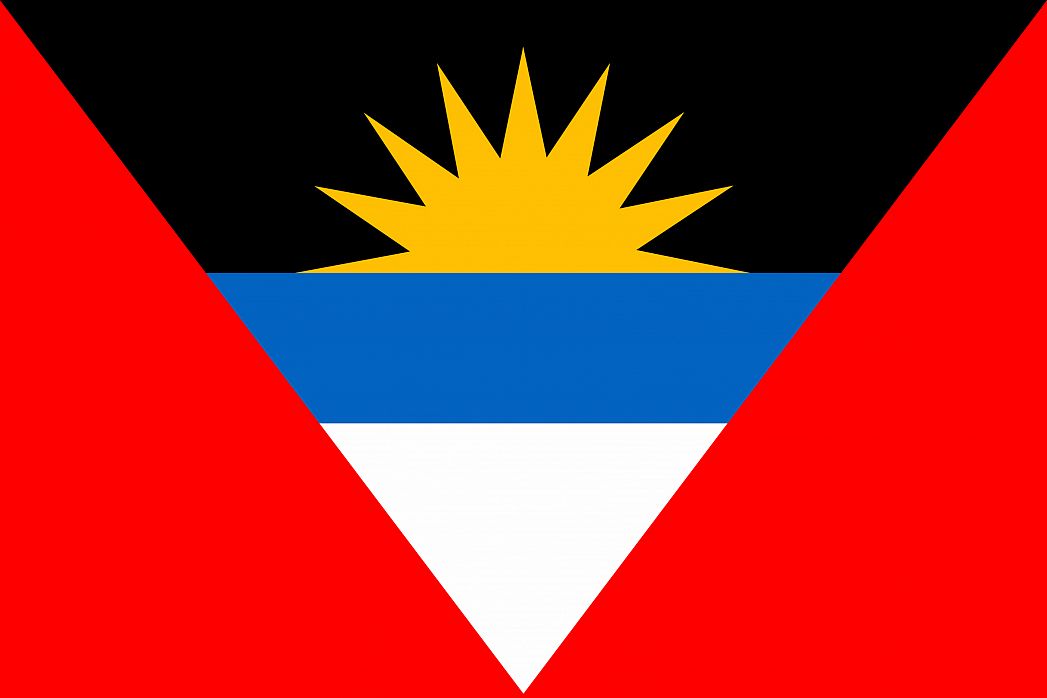The flag of Antigua and Barbuda is red with a uniquely inverted triangle, filled with various symbolic colors, on the top of the flag pointing downwards. The inverted isosceles triangle has a horizontal tricolor of white at the bottom, light blue in the middle and black on top with a rising golden sun at the center-right of the black field right on top of the blue field. The flag was adopted on Feb 27, 1967 to symbolize self-governance.
The colors on the flag each have a specific meaning. The red field on the flag represents the dynamism or energy of the population. The blue color is a sign of hope for the country, and the black field represents the African heritage of the people. The V-shape on the flag is a symbol of victory the country got after fighting for their independence. The seven-pointed golden sun symbolizes a new dawn for the state. The successive colors from the sun going downward (yellow, blue, and white) stand for sun, sea and the sand.
The flag of Antigua and Barbuda was adopted after they gained independence. Its design was a result of a competition held back in 1967. More than 600 locals entered the competition and submitted their designs. The competition was tight but Sir Reginald Samuel, a local artist and sculptor who was teaching in Antiguan high school, won the competition. Sir Reginald’s design was picked as the best representation of the country.
Between 1956 to 1958, Antigua and Barbuda’s flag was blue with a smaller British flag on one corner and the Antigua badge with white field surrounding it on one end. The badge on the previously-used Antiguan flag symbolized the white cloud on the British-blue ensign. It represented the blue water in the foreground plus light blue sky and clouds on top. From 1962 to 1967, the white field surrounding the Antigua badge was removed.
This page was last modified on May 1st, 2018
More on Graphicmaps

Published on 2019-11-06
What is a Trade Embargo?

Published on 2019-11-04
Which Two Countries Used to Have the Same Flag?

Published on 2019-09-16
What Is the Only Two-Sided State Flag?

Published on 2019-09-16
Which Country Flag Looks Like the Texas Flag?

Published on 2019-08-29
Flags That Resemble the US Flag

Published on 2019-08-20
